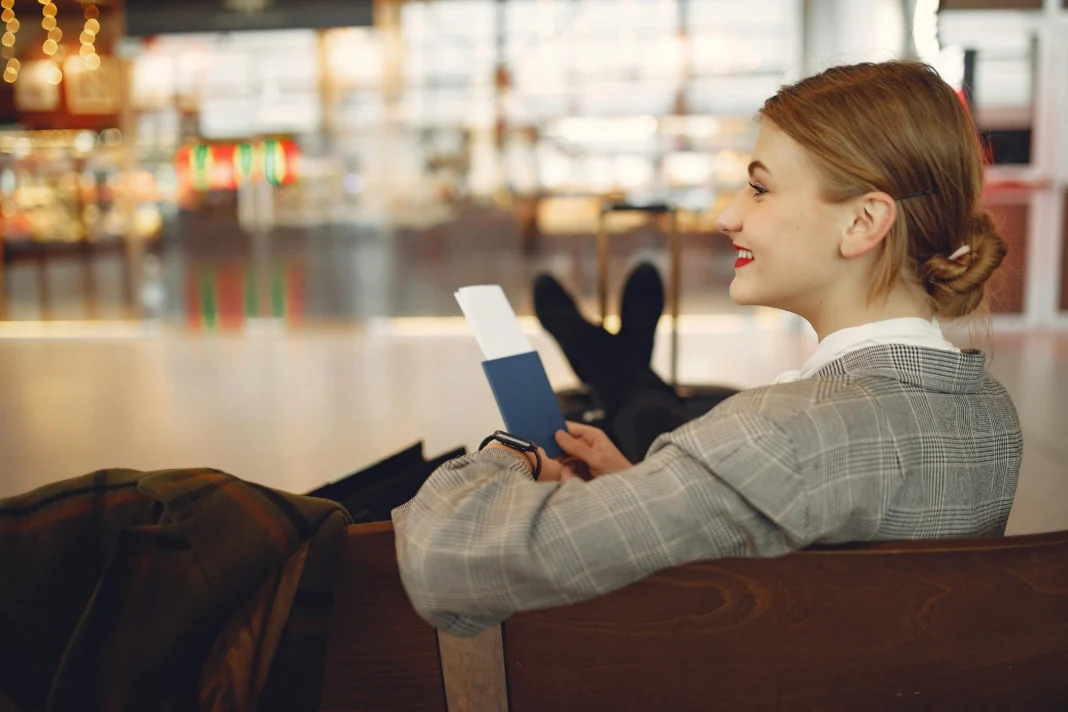Embarking on your first flight is an exhilarating yet nerve-wracking experience. The mix of excitement and anxiety is entirely normal, but with proper preparation, you can alleviate many of the worries associated with flying for the first time.
In this guide, we’ll walk you through the essential steps to ensure a smooth and enjoyable journey from start to finish. Whether you’re flying for leisure or business, understanding what to expect and how to prepare will help you navigate airports and flights with confidence.
So, let’s dive in and learn how to prepare for your first time flying!
Table of Contents
Pre-Flight Preparation
Before you even step foot in the airport, thorough preparation is key to ensuring a stress-free and enjoyable first-time flying experience. From researching and booking your flight to packing your bags efficiently, these steps will set the foundation for a smooth journey ahead.
A. Research and Booking
- Choosing the Right Airline: Research different airlines to find one that suits your needs and preferences. Consider factors such as reputation, safety record, amenities, and customer reviews.
- Understanding Ticket Options: Familiarize yourself with the various ticket options available, such as economy, premium economy, business class, and first class. Compare prices and amenities to choose the best option for your budget and comfort level.
- Booking Process and Considerations: Decide whether to book your flight online or through a travel agent. Pay attention to important details such as departure and arrival times, layovers, and any additional fees or restrictions.
B. Packing Essentials
- Making a Packing List: Create a comprehensive packing list to ensure you don’t forget any essential items. Include clothing, toiletries, travel documents, electronics, medications, and any other necessities for your trip.
- Understanding Baggage Restrictions and Allowances: Familiarize yourself with the baggage restrictions and allowances of your chosen airline. Pay attention to weight limits, size restrictions, and any fees for checked baggage or carry-on luggage.
- Packing Tips for Efficiency: Pack your bags efficiently to maximize space and minimize hassle. Roll your clothes instead of folding them, use packing cubes to organize smaller items, and pack heavier items at the bottom of your suitcase to prevent wrinkles.
By taking the time to research and prepare before your flight, you’ll feel more confident and relaxed as you embark on your first flying adventure. So, get organized, pack your bags, and get ready to take to the skies!
Airport Navigation
Navigating the airport can feel overwhelming, especially for first-time flyers. However, with a bit of preparation and knowledge of what to expect, you can breeze through the airport with ease.
A. Arrival and Check-In
- Arrival Time: Arrive at the airport well in advance of your flight’s departure time to allow for check-in, security screening, and any unexpected delays. Aim to arrive at least two hours before domestic flights and three hours before international flights.
- Check-In Process: Locate your airline’s check-in counter or kiosk and proceed with checking in for your flight. Have your identification and travel documents ready, such as your passport or driver’s license and booking confirmation.
- Boarding Pass: Once you’ve checked in, you’ll receive your boarding pass, either in printed form or electronically through a mobile app or email. Keep your boarding pass and identification handy as you proceed through security.
B. Security Checkpoint
- Security Procedures: Familiarize yourself with the airport’s security procedures to expedite the process. Remove any metal items, electronics, and liquids from your carry-on bag and place them in a separate bin for screening.
- Tips for Efficiency: Wear easily removable shoes and clothing, and organize your belongings beforehand to speed up the security screening process. Follow instructions from security personnel and be prepared to undergo additional screening if necessary.
- Packing Considerations: Pack liquids, gels, and aerosols in containers of 3.4 ounces (100 milliliters) or less and place them in a clear, quart-sized plastic bag. Ensure that larger containers are packed in checked luggage or purchased after passing through security.
Navigating the airport efficiently is essential for a stress-free travel experience. By arriving early, familiarizing yourself with security procedures, and packing wisely, you’ll breeze through the airport and be one step closer to your destination.
Onboard Experience
Once you’ve successfully navigated the airport and boarded your flight, it’s time to settle in and enjoy the journey. Here’s what you can expect during your time in the air and how to make the most of your onboard experience.
A. Boarding Process
- Boarding Group Information: Listen for announcements or check your boarding pass to determine your boarding group. Airlines typically board passengers in groups, such as priority, premium, and general boarding, to ensure a smooth process.
- Navigating Boarding: Follow the instructions of airline staff and wait patiently for your boarding group to be called. Have your boarding pass and identification ready for inspection, and proceed down the jetway to the aircraft.
- Finding Your Seat: Locate your assigned seat based on the row and seat number indicated on your boarding pass. Stow your carry-on luggage in the overhead bin or under the seat in front of you, ensuring that it’s securely stored.
B. In-Flight Comfort
- Tips for Comfortable Seating: Adjust your seat to your desired position for optimal comfort. Use the provided pillow and blanket if available, and consider bringing along a travel pillow and eye mask for added comfort during long flights.
- Entertainment Options: Take advantage of in-flight entertainment systems to pass the time during your flight. Choose from a selection of movies, TV shows, music, games, and reading materials to keep yourself entertained throughout the journey.
- Hydration and Snacks: Stay hydrated by drinking plenty of water throughout the flight, as the cabin air can be dry. Airlines typically offer complimentary beverages and snacks, but you may also bring along your own refreshments to enjoy during the flight.
The onboard experience offers an opportunity to relax and enjoy the journey to your destination. By familiarizing yourself with the boarding process, making yourself comfortable in your seat, and taking advantage of in-flight entertainment and refreshments, you can make the most of your time in the air.
Dealing With Anxiety
It’s common for first-time flyers to experience anxiety or nervousness before and during their flight. However, there are several strategies you can employ to manage and alleviate these feelings, ensuring a more comfortable and enjoyable travel experience.
A. Acknowledging Common Fears
- Fear of the Unknown: Acknowledge that fear of the unknown is a natural response to new experiences, such as flying for the first time. Recognize that many others share similar concerns and that flying is statistically one of the safest modes of transportation.
- Fear of Heights or Enclosed Spaces: If you’re afraid of heights or enclosed spaces, remind yourself that modern aircraft are designed to withstand a variety of conditions and that you’ll be in the care of experienced pilots and crew members throughout the flight.
- Fear of Turbulence: Turbulence is a common occurrence during flights but is typically harmless. Educate yourself about the causes of turbulence and remember that pilots are trained to navigate through turbulent conditions safely.
B. Strategies for Managing Anxiety
- Deep Breathing and Relaxation Techniques: Practice deep breathing exercises or other relaxation techniques, such as progressive muscle relaxation or visualization, to calm your nerves and reduce anxiety before and during the flight.
- Distraction and Entertainment: Keep your mind occupied during the flight by engaging in activities such as reading, listening to music or podcasts, watching movies, or playing games. Distraction can help shift your focus away from anxious thoughts.
- Positive Self-Talk and Affirmations: Replace negative thoughts with positive affirmations and reminders of your ability to cope with the situation. Repeat calming phrases to yourself and visualize a successful and comfortable flight.
C. Seeking Assistance
- Informing Flight Attendants: If you’re feeling anxious during the flight, don’t hesitate to inform a flight attendant. They are trained to assist passengers and can provide reassurance, support, and any necessary accommodations to help you feel more comfortable.
- Connecting with Fellow Passengers: Strike up a conversation with a fellow passenger if you feel comfortable doing so. Sharing experiences and chatting with others can help alleviate feelings of isolation and anxiety during the flight.
- Professional Support: If you have a severe fear of flying or anxiety disorder, consider seeking professional support from a therapist or counselor. They can provide coping strategies, relaxation techniques, and cognitive-behavioral therapy to help you manage your anxiety.
By acknowledging common fears, employing strategies for managing anxiety, and seeking assistance when needed, you can effectively cope with any feelings of nervousness or anxiety and enjoy a more relaxed and pleasant flying experience.
Arrival and Post-Flight
As your flight nears its destination and you prepare to disembark, there are important steps to take to ensure a smooth transition from the aircraft to your final destination. Here’s what to expect upon arrival and how to navigate the post-flight process effectively.
A. Landing and Disembarkation
- Arrival at Destination: As the aircraft descends and approaches the destination airport, listen for announcements from the flight crew regarding landing procedures and arrival gates. Ensure that your seatbelt is securely fastened and prepare for landing.
- Exiting the Aircraft: Once the aircraft comes to a complete stop at the gate, follow the instructions of the flight crew and prepare to disembark. Gather your belongings from the overhead bin or under the seat in front of you, being mindful of any items that may have shifted during the flight.
- Retrieving Checked Luggage: If you checked luggage for your flight, proceed to the baggage claim area to retrieve your belongings. Look for electronic displays or monitors indicating the carousel number assigned to your flight, and wait for your luggage to arrive.
B. Ground Transportation
- Options for Transportation: Consider your options for transportation from the airport to your final destination. Depending on your preferences and budget, you may choose to use public transportation, such as buses or trains, or arrange for a taxi, ride-sharing service, or airport shuttle.
- Tips for Arranging Transportation: If you haven’t already arranged transportation in advance, look for transportation desks or kiosks in the airport terminal where you can book a taxi or shuttle service. Alternatively, use a ride-sharing app or hail a taxi from the designated pickup area outside the terminal.
- Navigating Public Transportation: If you plan to use public transportation, familiarize yourself with the routes, schedules, and fare payment methods before leaving the airport. Look for signs or information booths providing guidance on how to access buses, trains, or other forms of public transit.
Upon arrival at your destination, your journey doesn’t end with stepping off the aircraft. By following these steps for landing, disembarkation, baggage retrieval, and ground transportation, you can smoothly transition from the airport to your final destination, whether it’s a hotel, home, or another location.
Conclusion
Congratulations! You’ve successfully navigated your first flying experience, from pre-flight preparation to arrival at your destination. Flying for the first time can be an exciting yet nerve-wracking experience, but with careful planning and preparation, you’ve overcome any challenges and embraced the journey with confidence.
Throughout this guide, we’ve covered essential steps for preparing for your first flight, including researching and booking your flight, packing efficiently, navigating the airport, and managing anxiety during the flight. By following these tips and strategies, you’ve set yourself up for a smooth and enjoyable travel experience.
As you reflect on your first flying experience, remember that each journey is an opportunity for growth and learning. Whether you’re traveling for leisure or business, embracing new adventures and exploring new destinations is part of the joy of travel.
As you continue to travel and explore the world, may you carry the knowledge and confidence gained from your first flying experience with you on future adventures. Bon voyage, and happy travels!





